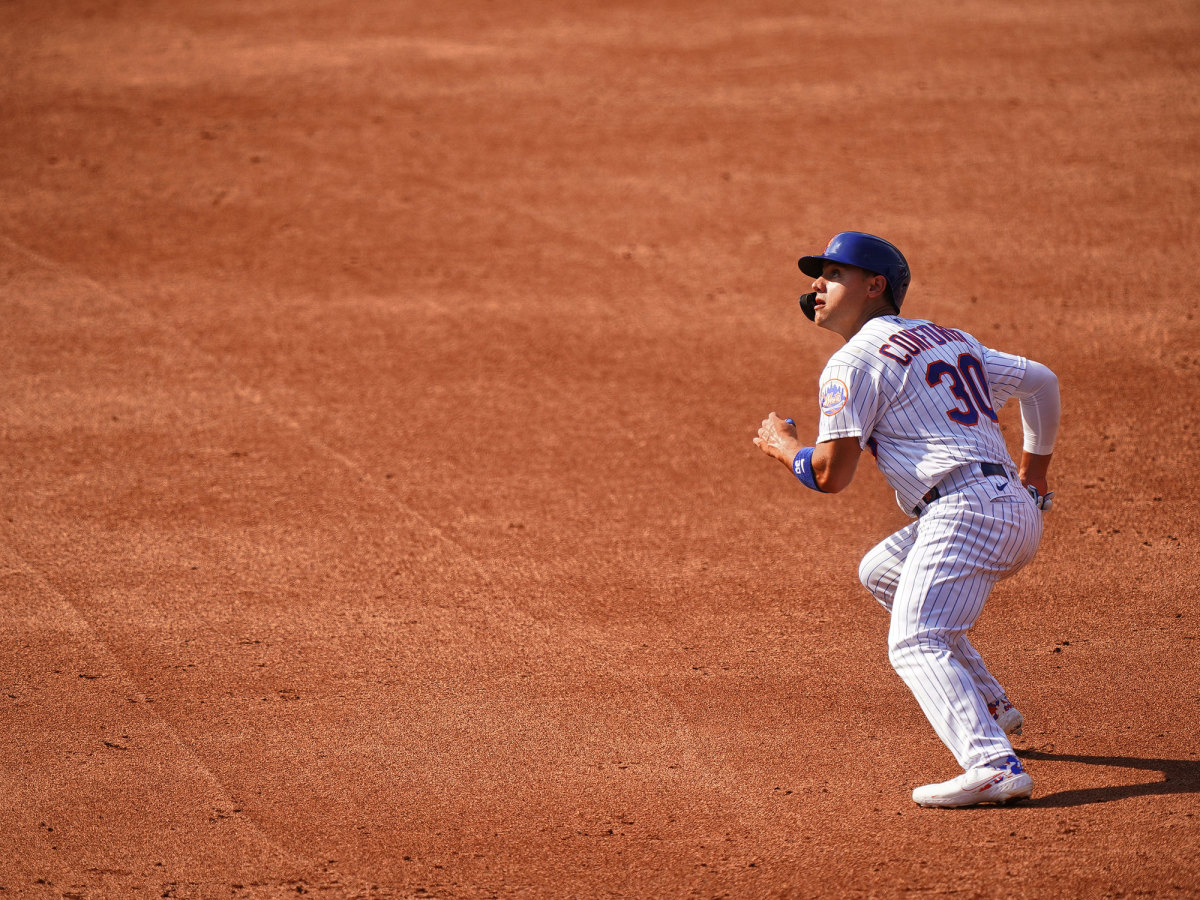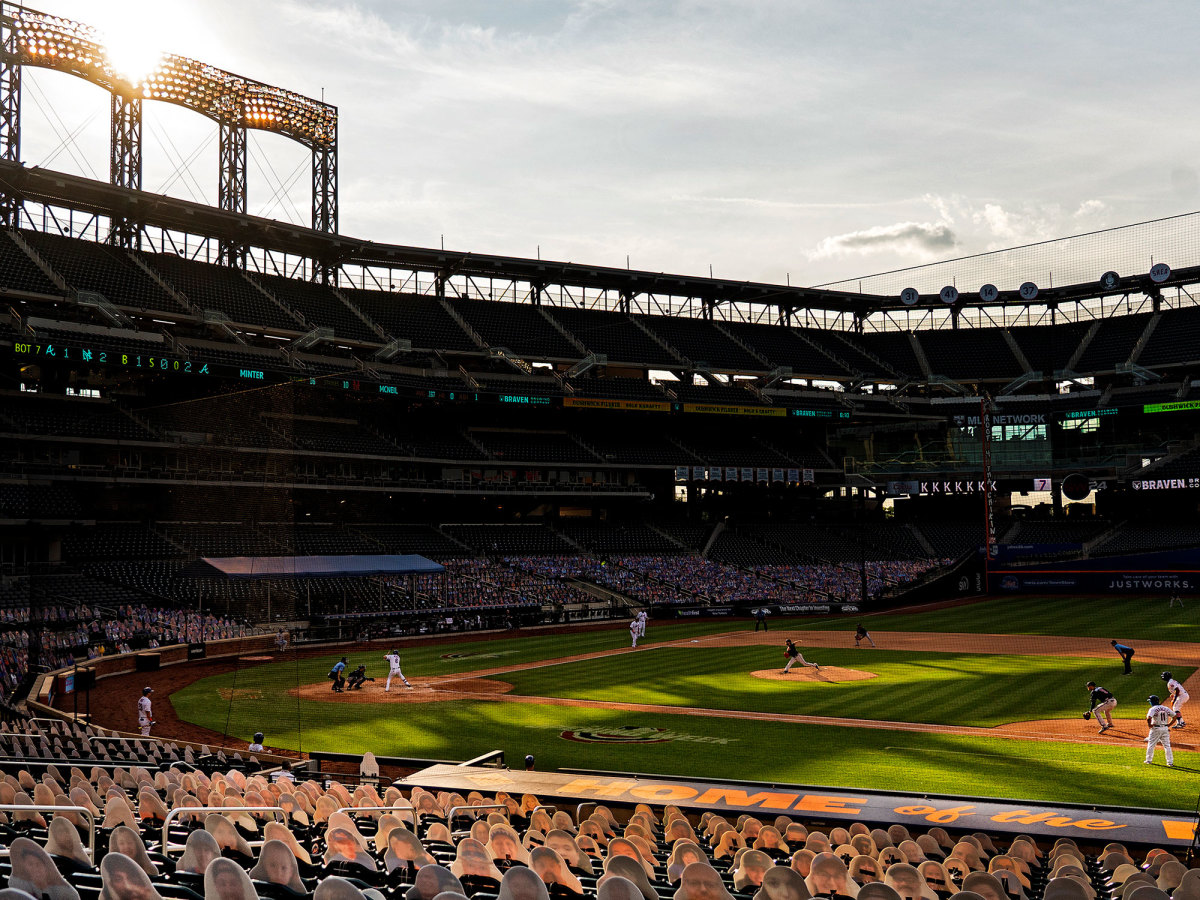With No Guidance on Handling an Outbreak, MLB Must Scramble
MLB’s 2020 operations manual has details on how players should board an airplane, how much time a baseball must sit untouched before it can be considered disinfected, and how many physical therapists can enter the restricted area of a ballpark. It addresses rosters, travel, and visas; spitting, high-fiving, and showering; cryotherapy, saunas, and wet rags.
It does not address what happens if a club has so many players test positive for the coronavirus that it can no longer field a reasonably competitive team.
And yet, only four days into the season, this is exactly the question that the league faces: What do you do when one team experiences an outbreak? Is there a point where you must shut down, if only temporarily? If there is such a point—is this not it, with positive tests for 11 players and 2 coaches on the Miami Marlins and the entire team stranded on the road in Philadelphia, where they received their last test results?
These questions jumped out from the time that the return to play was announced. How do you handle this logistically, competitively, ethically? But there’s only one section of the manual that discusses the possibility of a situation with multiple cases of the virus on one team, and that has to do with roster movement, not any of the more pressing questions here: “In the event that a Club experiences a significant number of COVID-19 Related IL placements at the Alternate Training Site at any one time (i.e., three or more players), and the Club chooses to substitute those players from within the Club's organization, MLB reserves the right to allow that Club to remove those substitute players from the Club Player Pool without requiring a release.”
“Three or more players” is what the operations manual deemed “significant,” at least when it came to the Alternate Training Site. But the Marlins now have more than triple that from their active traveling roster, in a nightmare situation for the league, and there’s no official instruction on how to move forward. The manual does not address how to proceed in the face of a suspected outbreak. Which is how you get reports that the team’s decision to play yesterday—with what was, at the time, three confirmed infections—was made in a group chat governed by veteran shortstop Miguel Rojas, rather than by, say, a previously agreed upon set of league officials and public health experts.

MLB’s plan was never to build an environment where the virus could potentially be shut out—while the idea of a bubble was floated back in May, it never had much traction, even as most other leagues decided to use such a format. (Which made sense: MLB has much larger rosters than the NBA and needed months of a regular season versus an expanded playoff like the NHL or a month-long tournament like MLS and the NWSL.) Instead, MLB decided to hold the season in its regular stadiums around the country, acknowledging that the virus could and likely would still enter their playing environment, and designed a protocol that was meant to identify cases quickly and isolate them before there could be too much spread.
This means that baseball was prepared for positive tests, with an operations manual that tells a team how to address such a result for one player, or coach, or staff member. But there’s no written instruction on how to handle a situation like the Marlins’—one that looks like an outbreak.
“If you’re trying to play in two dozen home markets here in the U.S., just based on the level of viral spread that we have, I’m very concerned that some of those will have rampant spread and be exploding at any given time,” Dr. Zachary Binney, an epidemiologist at Emory University, told SI for a story that addressed some of these same questions back in June, when they were still just hypothetical. “And if that’s the case, could your local public health officials shut it down and say you can’t play? Or will you say, it’s too dangerous, we can’t play? Will you get so many cases on your team that you’ll be forced to shut it down? And if that happens, what does that look like in terms of scheduling disruption?”
More than a month later, as the outlook on the virus has worsened in several baseball markets, MLB has still not found solid answers for those questions. But it’s had to scramble on all of them. If local public health officials shut a team down? The Blue Jays faced that before the season even started; MLB’s solution was to try to move the club to Pittsburgh, then Baltimore, but had to end up sticking them in Triple-A Buffalo. (The manual definitely didn’t prepare for that one.) If there’s a critical mass of cases on one team? Now we’ll find out. The Marlins have not yet flown back to Miami; the team’s home opener tonight has been postponed. The Yankees-Phillies game has been postponed, too, in order to ensure that the visitors’ clubhouse that the Marlins just vacated in Philly does not potentially introduce any more spread. That’s today. What about tomorrow?
A 60-game season in 66 days does not offer much room for disruption. A double-header or two can be added if you’re talking about a small number of contests. Beyond that, it’s tough. And the logistics are just one piece of the puzzle. If the Marlins are without 11 players for a full week—let alone two weeks, or longer—how are they supposed to proceed competitively? When Commissioner Rob Manfred was asked about what it would take to shut down the season on The Dan Patrick Show, this was the standard he set: “The way that I think about it, Dan, is in the vein of competitive integrity of a 60-game season. If we have a team or two that’s really decimated with a number of people who had the virus and can’t play for any significant period of time, it could have a real impact on the competition and we’d have to think very, very hard about what we’re doing.”

Is this—11 players—not that exact prompt to think very hard about what they’re doing? If this has happened to one team, so early in the season, how does the league try to ensure that it doesn’t happen to others? The manual does offer some flexibility here: It acknowledges that MLB can relocate a team to a neutral site at any point and, with the input of the players’ union, institute additional restrictions to govern behavior away from the field. But how can anyone have faith in what comes next when this is the result of the original protocol?
And, of course, it’s not just about scheduling logistics and competitive integrity. There are players and coaches with serious concerns about health risks. But they’re not the only ones here. What about the hotel staff? The outlying members of the support staff, who may not interact directly with the players, but can interact with those who have interacted with them? What about the families? The decision on how to move forward here may be made primarily on the basis of the competitive principle referenced by Manfred. But there’s far more at stake here beyond the legitimacy of the season.
In Marlins CEO Derek Jeter’s statement on the situation, there was some curious diction in the first sentence: “unchartered waters,” he wrote, rather than “uncharted.” An innocuous typo, probably. But given how little guidance there is in the official governing document of this season—how little instruction there is on how to handle such a foreseeable dilemma—you could be forgiven for thinking otherwise.
